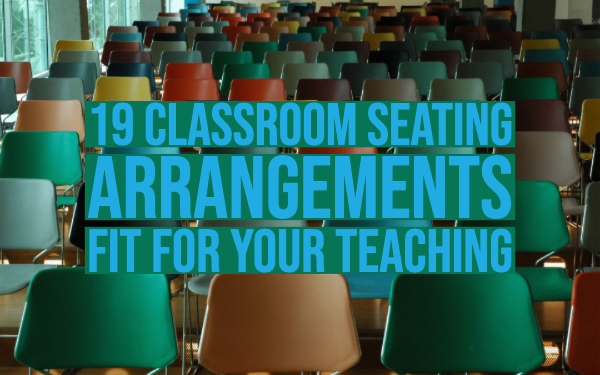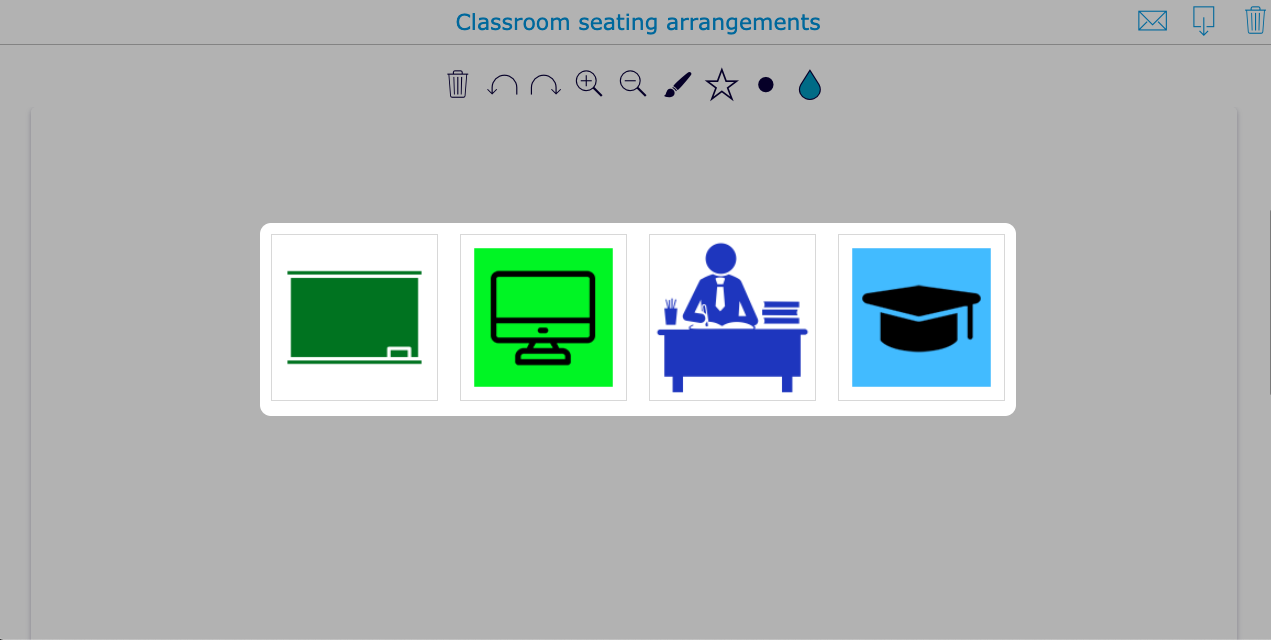19 Classroom seating arrangements fit for your teaching
 Lucie Renard —
Lucie Renard —
Every lesson is different. There are many teaching methods for your lesson topics, so why not change your classroom interior based on your lesson? Sometimes, students have to work in groups, sometimes you give a presentation, sometimes you do some corner work. Every strategy needs an effective classroom arrangement.
In this post, I’ll show you 19 possible classroom seating arrangements. I’ll also mention the teaching methods that go with the arranged bench seating and at the end of this post, I added an interactive whiteboard with which you can create your own classroom seating chart.
19 types of seating arrangements for classrooms
1. Pairs
Let’s start with one of the most used bench seating arrangements: Pairs. Pair up students and let them work individual or together. It’s more fun with two but still gives you a nice overview. In this way, students can get their heads together when needed. If they have to work individually, let’s say they have a test, you can place a binding folder between the students. Here, you can also easily divide your classroom into three columns of pairs. Ask, for example, the first column to answer question A, the second column to answer question B and the last column to answer question C. Go over the answers when they’ve finished. That way, you can speed up the classical work.
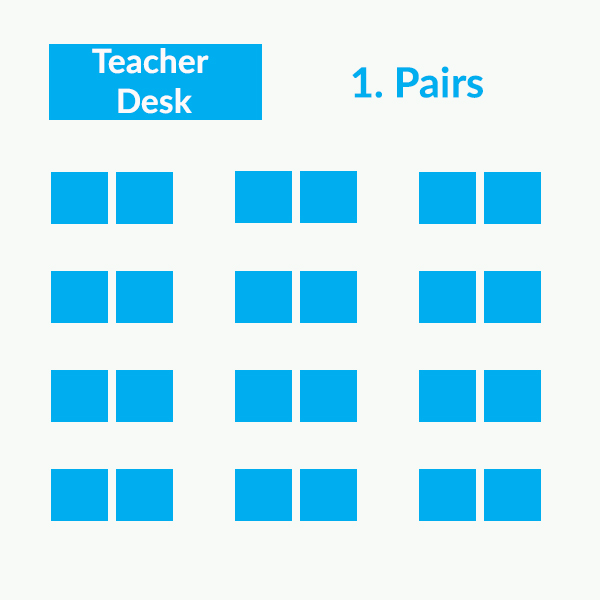
2. Grid
This seating arrangement is especially handy when testing your students or when you want them to work individually. They can’t talk to each other or let their eyes wander on someone else’s paper. I wouldn’t recommend this seating arrangement in your classroom all the time. Students could get demotivated as they have no-one to “whisper” to.
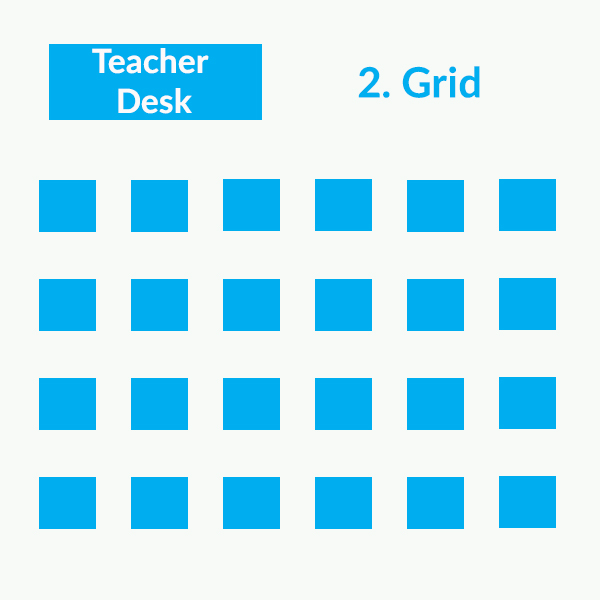
3. Presentation
Get your students seated next to each other on one line. Repeat this a few times if you have enough classroom space. The purpose is to let students listen to the one in front of the classroom. This can be the teacher, or a student giving a presentation or demonstration. Seating your students this way is a good idea when you want them to focus on the front of the classroom. All students should be able to see something and it’s easier for the one in the front to divide its attention and eye contact.
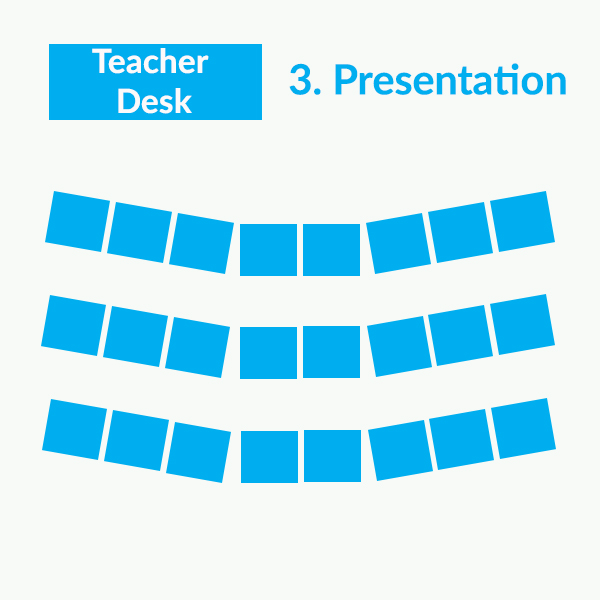
4. Groups of Four
Use small groups of four when you want your students to put their heads together. You can let them work on an assignment. You can also let them think about a question individually and ask them to deliberate with the other students in the group. Of course, just individual work is also possible. This seating arrangement just makes it a bit more social. When working with “groups of four” students get to sit with others all the time. They get to know each other better and make friends. This seating arrangement is a good idea to start the year.
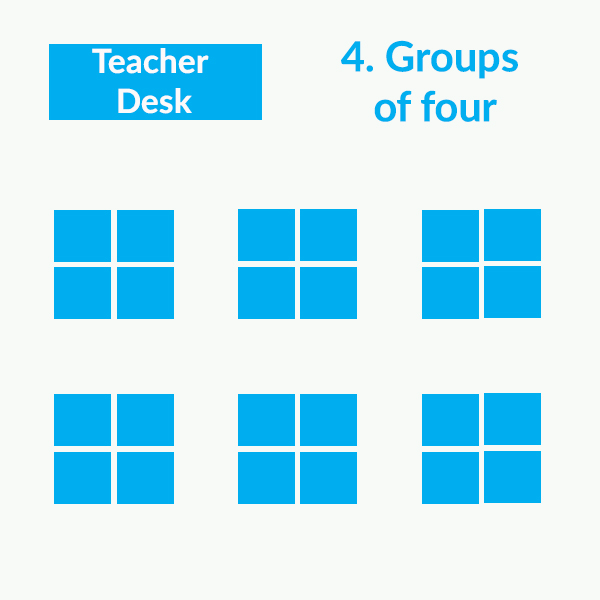
5. Corner Work
When you’re working on a big project or teaching a comprehensive topic with different aspects or themes, this seating arrangement will do just fine. Assign different tasks to each corner. For example, a (digital) crossword riddle, a quiz, a video with questions, a whiteboard exercise, … All the assignments complete each other. Let your students shuffle so they’ve been to every corner and did every assignment. You can also use it to split up students with the same learning level. One corner where students get more instructions, the other has expansion exercises, one corner has noise-canceling headphones so students can concentrate, etc.
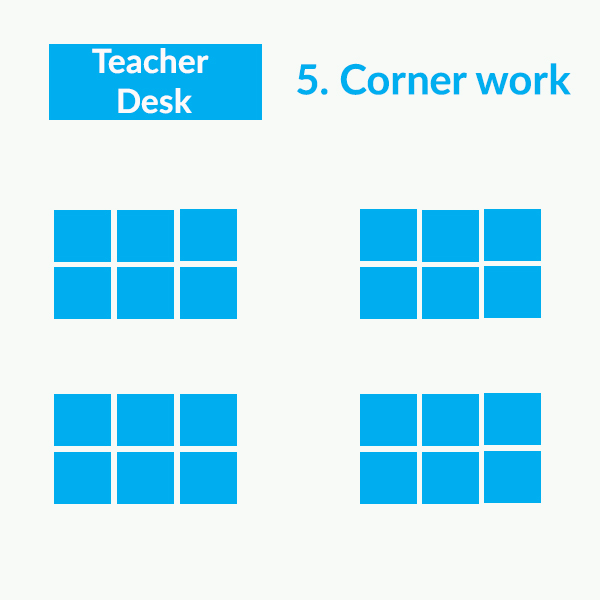
6. U-shape
The U-shape or the horseshoe. This classroom arrangement encourages discussion and makes it easy for the teacher to observe students and give one-on-one help. Don’t use this desk arrangement for group work. This will be almost impossible.
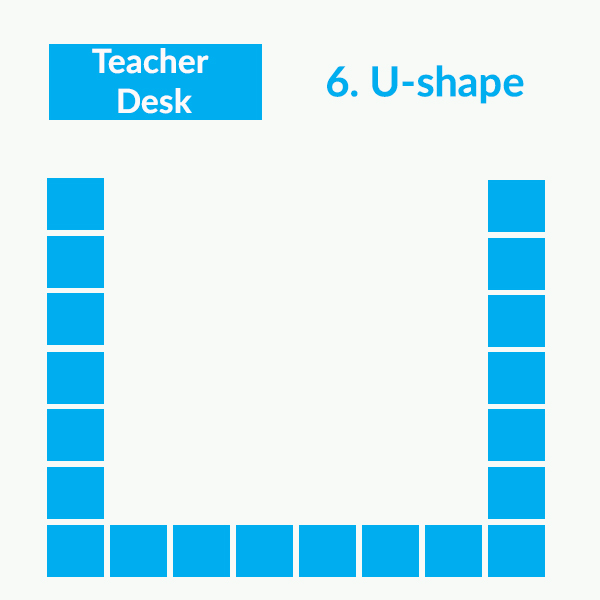
7. Double U-shape
When you have more students or a smaller classroom, you can choose for the double U-shape arrangement. This allows you to put more students next to each other. It’s very cozy but has some disadvantages as well. For example, it’s harder for the teacher to go around in the classroom. One-on-one support is more or less off the table here. Students in the back might feel a bit left out as well. It’s best to use this arrangement when giving a presentation or when teaching in front of the classroom.
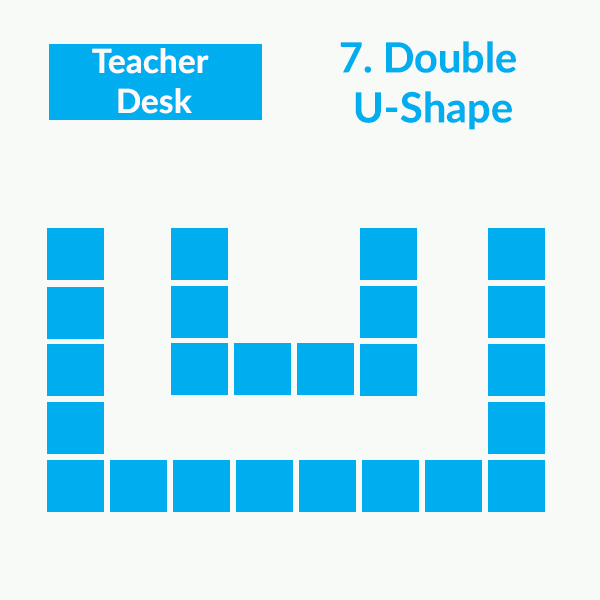
8. U-shape Large Classroom
You can see where I’m going here. Let’s say you have a large classroom and a lot of students, then you can definitely use this student desk arrangement. In contrast to the double u-shape arrangement, this u-shape for in a large classroom doesn’t really cast students out. There’s no separate “U” in the front, which makes it more open to the students in the back.
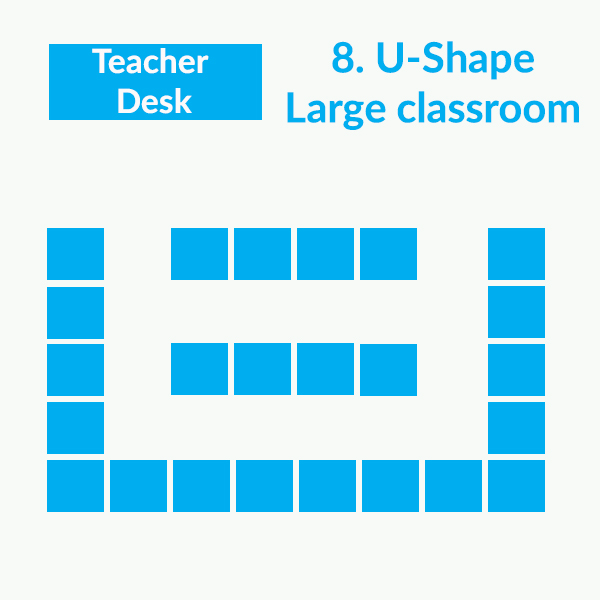
9. Conference Small Classroom
Are you teaching a small group of students? In that case, the conference classroom arrangement is a possibility. The “conference classroom” gives your students an “equal voice” and a snapshot of a business meeting room. Use the conference seating arrangement when making classroom rules, planning an event, for an intervention, a class discussion, etc. You can also practice speech (foreign language) by letting the students facing each other talk to each other. Let them switch places and move on to the next student in line and talk about another topic.
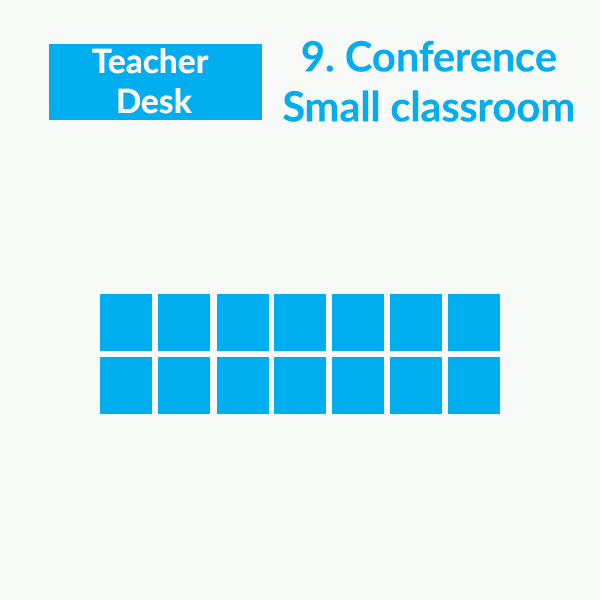
10. Conference Large Classroom
Don’t worry though, there’s a conference classroom layout for many students and a large classroom as well. Use this just like mentioned above. The only thing that’s not possible is letting students face each other and talk directly to them. Don’t use it for group work either.
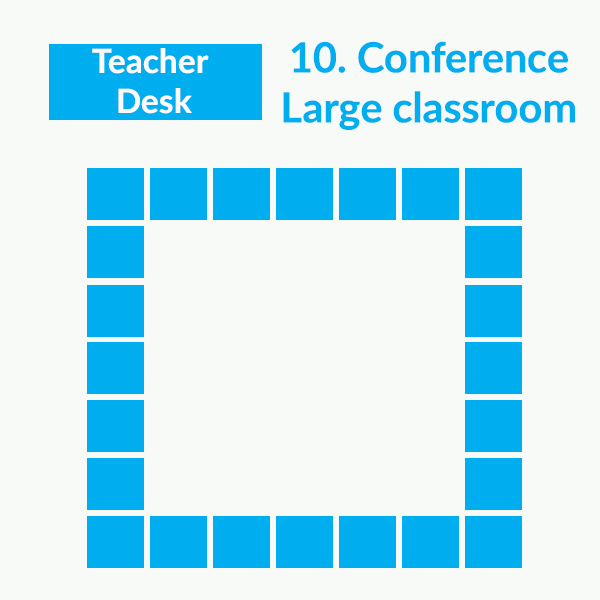
11. Herringbone
This interesting student desk arrangement serves two purposes. It is rows of two, three or four, but slightly turned so they face the center of the classroom. This way, students give full attention to the teacher or students at the front of the classroom, and they can join in on a classroom discussion easily. You can also let your students work together with the ones on their row.
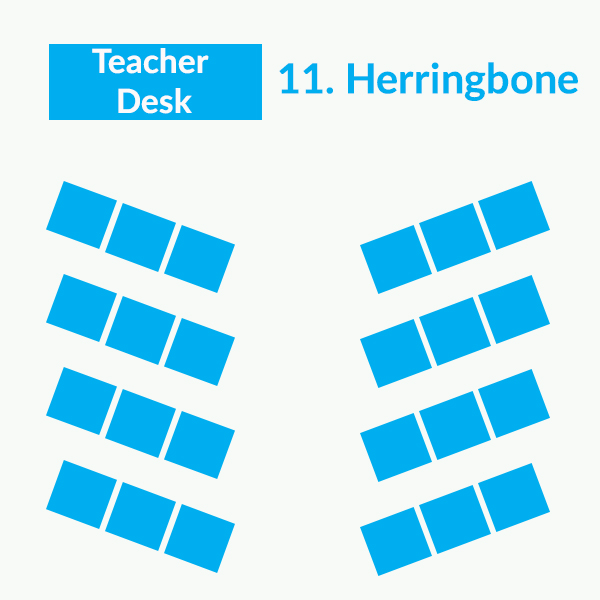
12. Rows
This is used most of the time in higher education when students have to listen to the teacher in the front. Here, the teacher can’t give any one-on-one feedback as it’s hard to reach students in the middle. It’s a seating arrangement to get as many students in one classroom.
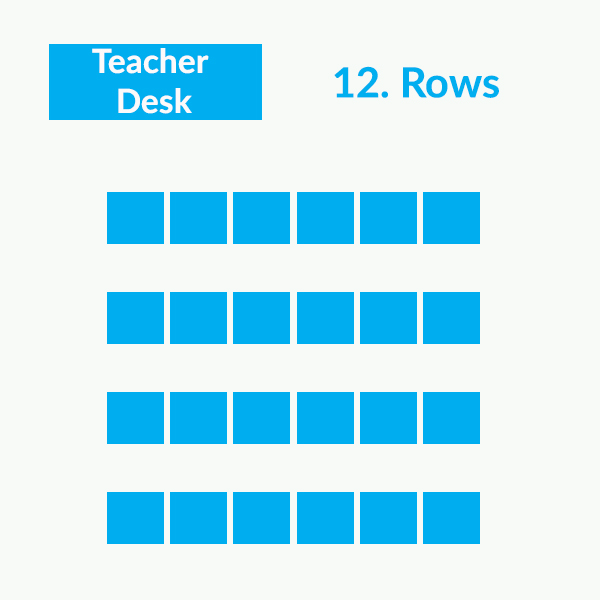
13. Computer Combination
Any of the other classroom seating arrangements work with portable devices like laptops, chromebooks or tablets. When you’re in a classroom with student desks and computers, you can use this classroom layout. It gives you an overview of your students’ computers.
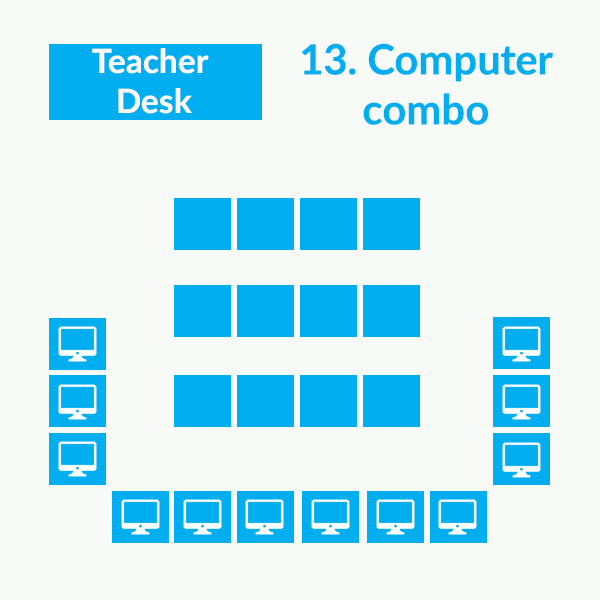
14. Butterfly
This one is probably new to you. Let your students work individually, yet they sit together. This middle of the butterfly serves as a place where students go for extra instructions or a new assignment. Everything will be spread out on those desks in the middle. The teacher will be available to give more guidance when needed as well.
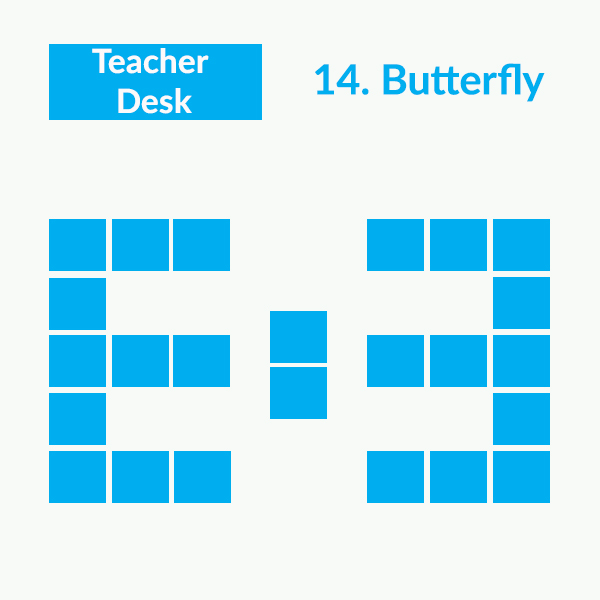
15. Eye
Use eye-formation when you’re setting up a debate or discussion. Select a group of students that will debate in the middle of the eye. The rest will be the audience.
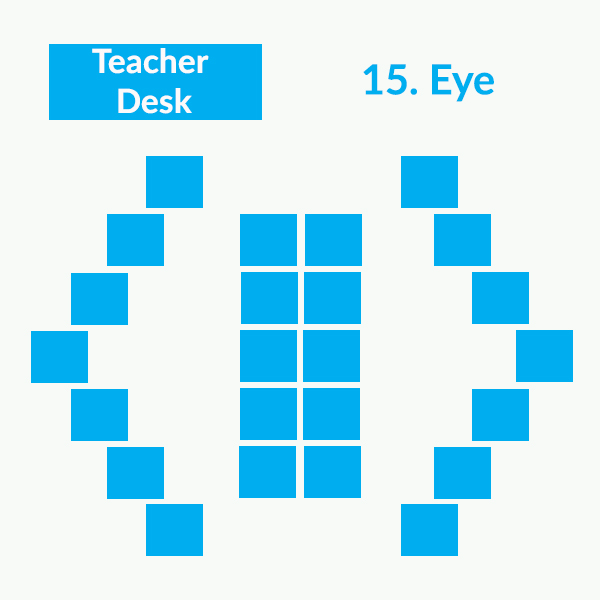
16. Circle
The circle is a classic seating formation in which you encourage your students to join a classroom talk or discussion. It’s more or less the same as the conference classroom seating.
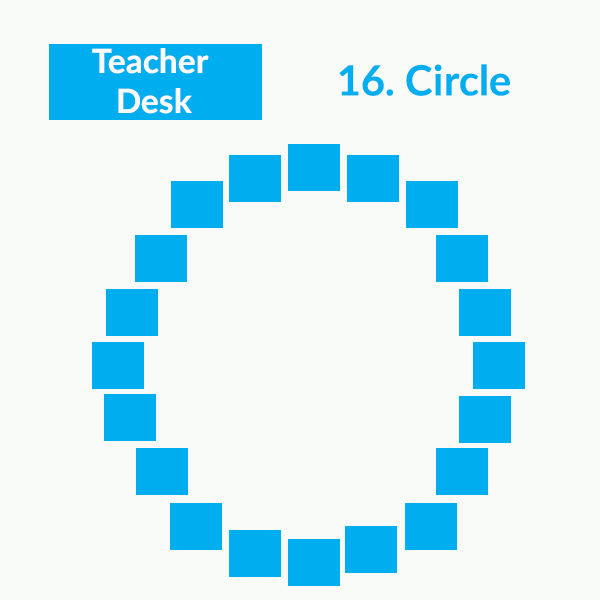
17. Large Groups
Split your classroom into two large groups. Let the groups work on bigger projects like organizing an event, putting together a play, setting up their own “company”, keep a political meeting with different representatives,etc. Keep in mind that it might get loud in your classroom.
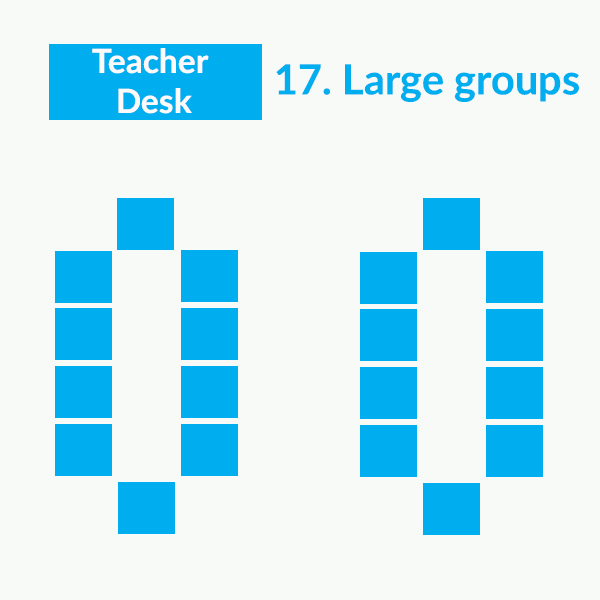
18. Horseshoes
Use this classroom desk arrangement to encourage discussion in smaller groups. Introduce some bold statements or “problems” about your teaching topic and let your students discuss them in their groups (in a foreign language you’re teaching languages). Encourage your students to come to a consensus or a solution to the problem.
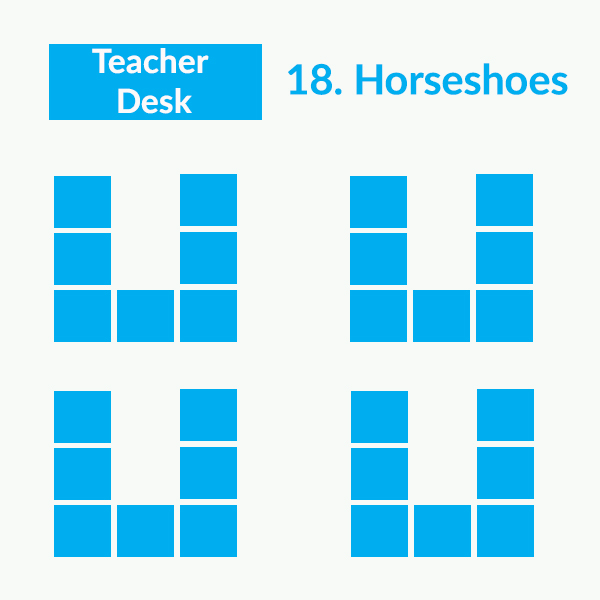
19. Banquet
Use this classroom seating layout for two things:
- Let students talk to the one facing them (discussion, practice a foreign language, get to know each other, etc.).
- Divide your classroom into two groups. Let them work together on bigger projects like in number 17. Let them organize an event, put together a play, set up their own “company”, etc.
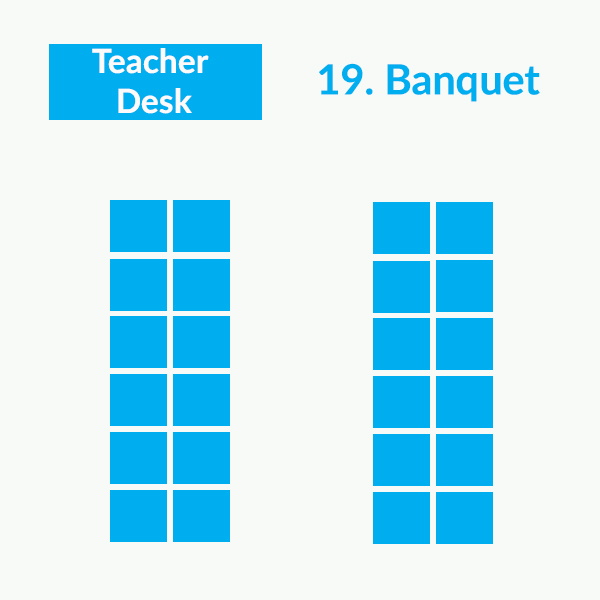
Create your own classroom seating arrangement
I guess these are more or less all the possible classroom seating arrangements. Of course, you can make combinations of different classroom layouts and adapt them to your own classroom and available space. Use this basic lesson plan template with a whiteboard below. Use the stickers I created to set up your own classroom layout for your teaching purpose. It’s not a classroom seating arrangement app, but it comes close. It gives you much more freedom as you can draw your own classroom setup. Check out this tool (the worksheet widget) on BookWidgets!
Wrap up
Every classroom is different. The most important thing is that students feel confident and trust the classroom environment. Make sure to move around your student desks from time to time so you have the perfect classroom seating arrangement for your lesson.
Share this post with other teachers to inspire them! A little variety in class is always nice.
Let us know on Twitter what your favorite type of seating arrangement is! If you have any other setup ideas or a fun combination in your classroom, be sure to share them in our Facebook Group.
Find me on LikedIn! My name is Lucie.

